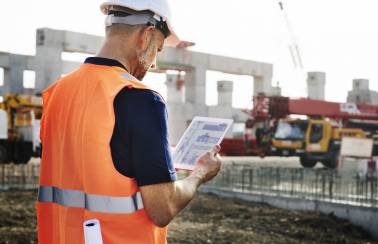KARASTA
KarastaCEM II/A-L 42.5RKarasta is a general purpose cement, one of the products of the family of common cement, according the European Syandard EN 197-1:2011. It complies with Iraqi industrial license No:3868and is manufactured from natural products and using sustainable. |
|
|
Applications Karasta can be used in the following applications:
Standard: Portland Limestone Cement: CEM II/A-L 42.5R
Properties: The properties of fresh concrete made with Karasta compared with concrete made with Oordinary Portland Cemente (CEM I) are better in terms of:
|
|
|
The properties of cured concrete made with Karasta compared with concrete made with Oordinary Portland Cemente (CEM I) are better in terms of:
The above guidance is only in the case where the mix design is not specified by the project consultant.
Usage & General Recommendations All concrete ingredients (cement, aggregates, mixing water & admixtures) should comply with the relevant standards. Local (or international) concrete codes should be referred to, and appropriate design parameters (eg. cement type, minimum cement content, maximum W/C ratio and concrete strength class) must be selected depending on the requirements of the application, and according to international standards. Avoid casting concrete in temperatures less than 5 oc and above 35 oc.
Advantages:
Water : In general, the more water is used for a given quantity of cement, the more porous and thus the weaker the concrete will be. It is therefore important to use the minimum amount of water required to make the mix workable, in order to obtain a strong and durable hardened concrete. Make sure to use clean water for mixing, watering and spraying.
Mixing : It is recommended to mix the constituents in a fully automated batching plant.
Curing : Concrete or plaster should be watered for a period no less than 3 days to prevent cracking and to ensure proper strength development. In hot weather, concrete or plaster should be watered for 7 days. Following the placement, horizontal concrete surfaces should be sprayed gently with water, be cured by pulverized agents or protected with plastic (or wet hessian) sheets, in order to prevent drying shrinkage and water evaporation.
Availability: Available in bulk, 50kg bags or 1.5 ton jumbo bags throughout Iraq.
Storage
Occupational Health Cement and concrete in general, may cause skin irritation. During any application, wearing gloves and eye glasses is highly recommended. In case cement touches the eyes or bare skin, the area should be thoroughly rinsed with free flowing water and medical assistance be provided when necessary.
Technical Support: Further information, advice on this product and the full range of Lafarge cement products can be obtained through the contacts listed below:
|
|
|
|









